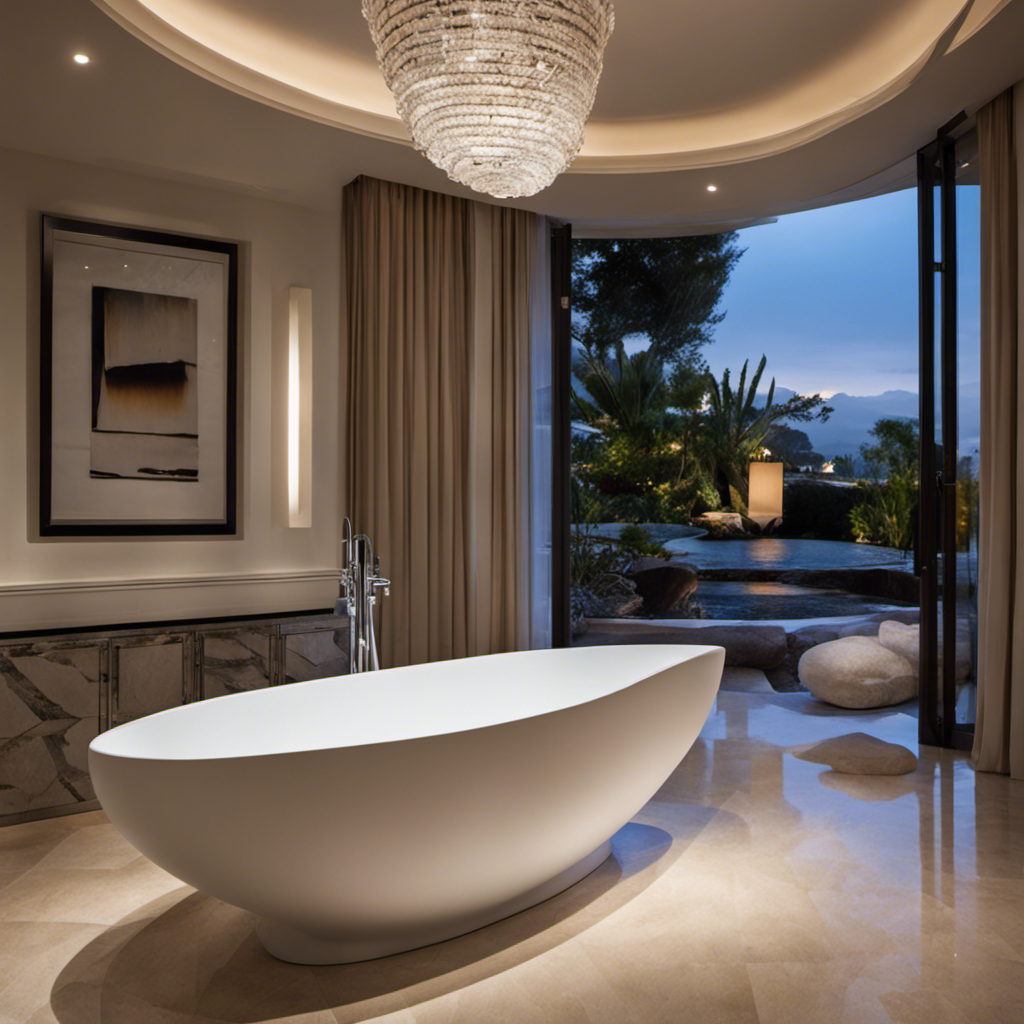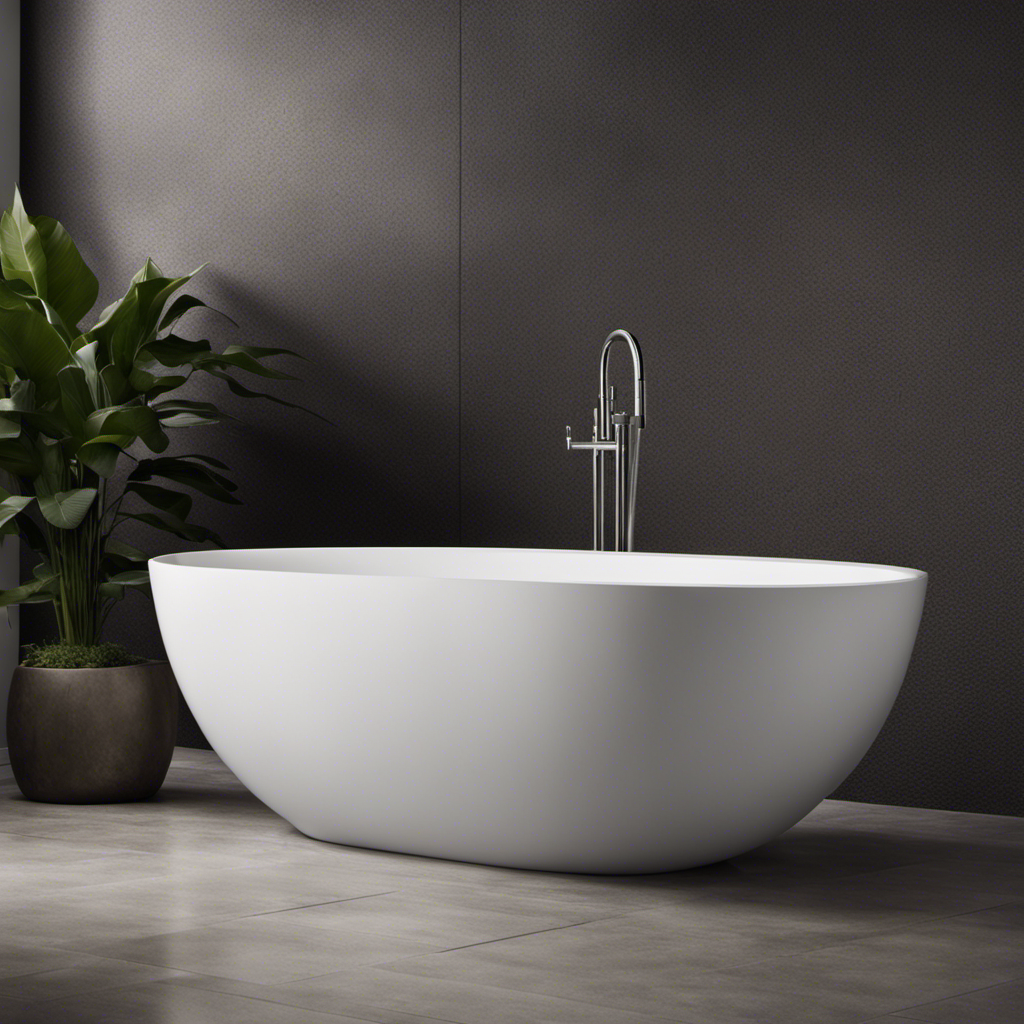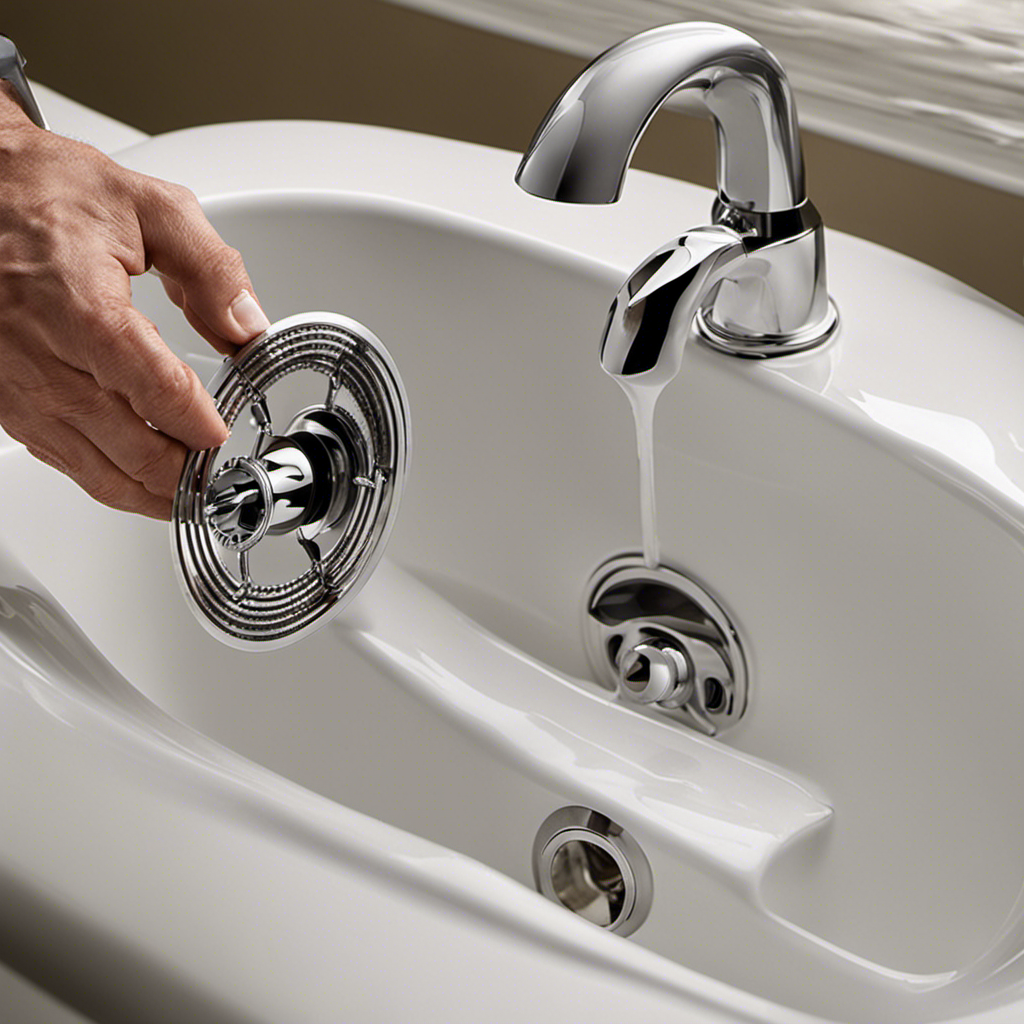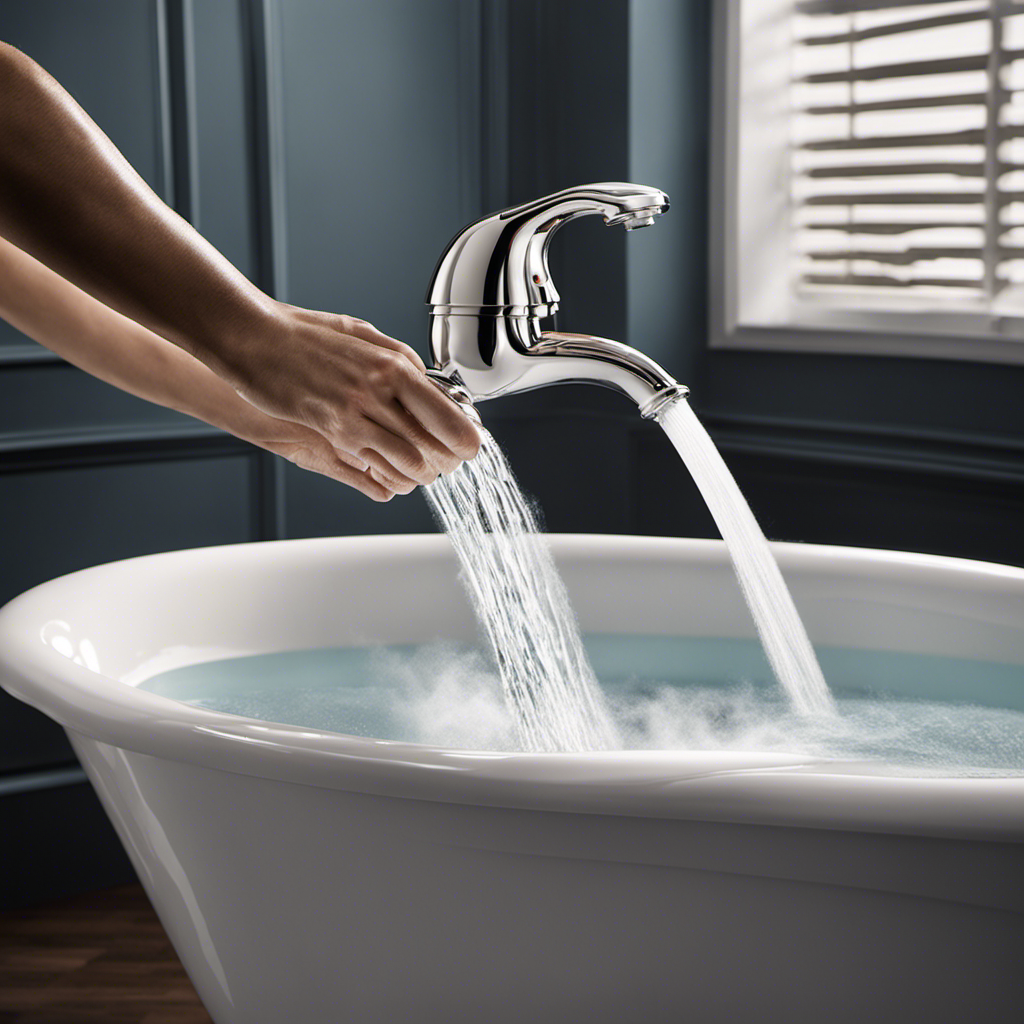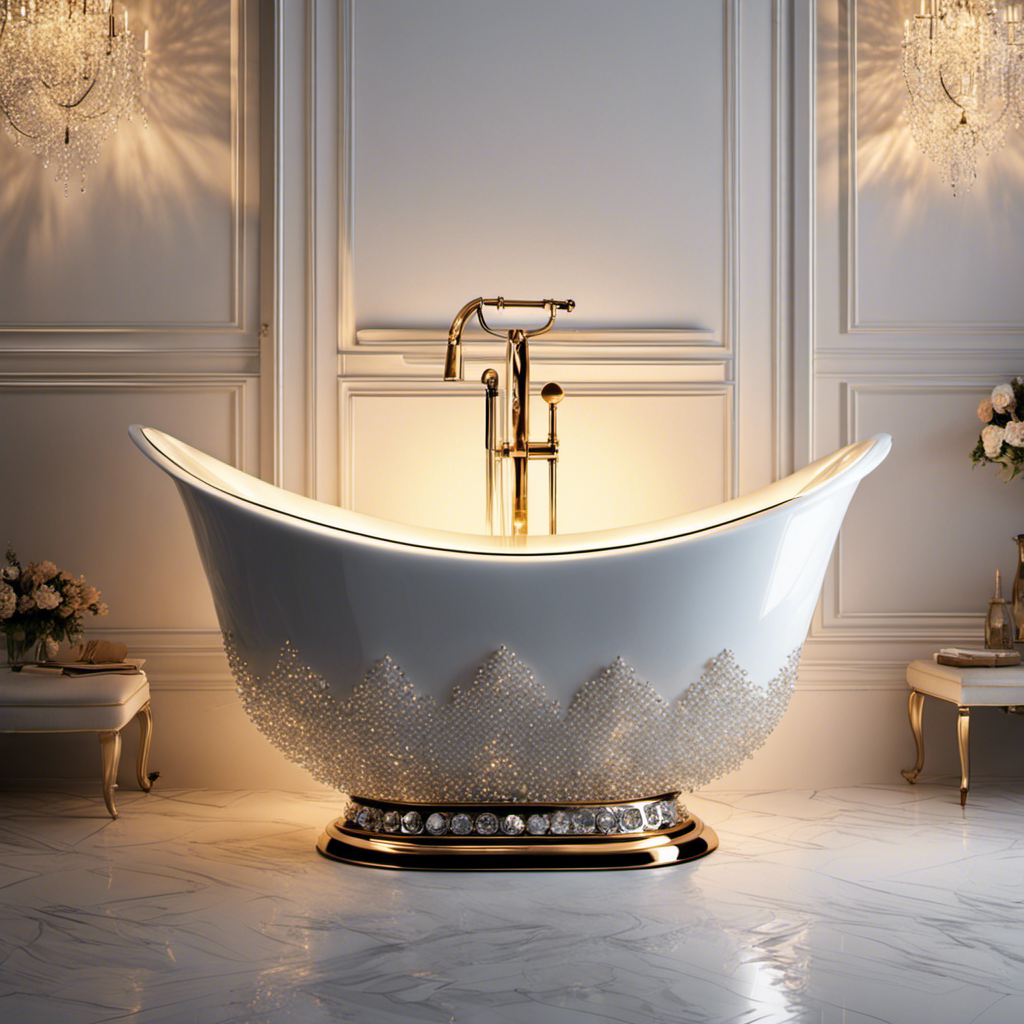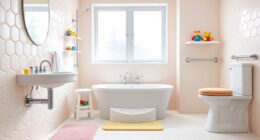I’ve been on the search for the best bathtub, and let me tell you, it’s not an easy task. With so many options out there, it can be overwhelming to decide which one is right for you.
Lucky for you, I’ve done the research and compiled all the information you need to make an informed decision. From the material considerations to the size and shape options, I’ve got you covered.
So sit back, relax, and let’s dive into the world of bathtubs.
Key Takeaways
- Material considerations are important when choosing the best bathtub, with options such as acrylic, fiberglass, cast iron, and porcelain-enameled steel offering different benefits.
- Size and shape options should be considered based on factors such as space availability, style preference, comfort, and accessibility needs.
- Key features to look for in the best bathtub include the material, installation options, and proper maintenance for durability and functionality.
- Freestanding bathtubs have advantages such as aesthetics, versatility, and a more immersive soaking experience, but they also have disadvantages including higher cost, space requirements, and cleaning challenges.
Material Considerations for the Best Bathtub
When choosing the best bathtub, you’ll want to consider the materials used for maximum durability and comfort. The material of the bathtub plays a crucial role in determining its longevity and overall performance. There are several options available, each with its own set of advantages and drawbacks.
Common bathtub materials include acrylic, fiberglass, cast iron, and porcelain-enameled steel. Acrylic is a popular choice due to its lightweight nature, easy maintenance, and resistance to stains and scratches. Fiberglass is another lightweight option, known for its affordability and ease of installation. Cast iron offers exceptional durability and heat retention, but it can be heavy and require additional support during installation. Porcelain-enameled steel combines the durability of steel with the smoothness and easy cleaning of porcelain.
When it comes to bathtub installation, it is crucial to consider the weight and compatibility of the chosen material with your bathroom’s structure.
Size and Shape Options for the Best Bathtub
There are various size and shape options available for finding the ideal bathtub. When it comes to choosing between oval and rectangular bathtubs, it ultimately depends on personal preference and the space available in your bathroom.
Here are four factors to consider when selecting the perfect bathtub:
-
Space: If you have a small bathroom, a compact rectangular bathtub would be a great option to maximize space utilization.
-
Style: Oval bathtubs offer a more modern and luxurious look, while rectangular bathtubs provide a classic and timeless appeal.
-
Comfort: Oval bathtubs are known for their ergonomic design, offering a more comfortable and relaxing bathing experience.
-
Accessibility: Rectangular bathtubs are easier to step into and out of, making them a practical choice for individuals with mobility concerns.
Considering these factors will help you make an informed decision when choosing the best bathtub for your needs.
Now let’s explore the key features to look for in the best bathtub.
Key Features to Look for in the Best Bathtub
One important factor to consider when choosing a bathtub is the material it is made of. There are various options available, each with its own advantages and disadvantages.
The most common materials for bathtubs are acrylic, cast iron, and fiberglass. Acrylic is lightweight, easy to clean, and comes in a variety of colors and styles. Cast iron is durable and retains heat well, but it is also heavy and may require additional support during installation. Fiberglass is affordable and lightweight, but it may not have the same durability as other materials.
When it comes to bathtub installation options, you can choose between freestanding, alcove, and corner tubs. Freestanding tubs are a popular choice for creating a luxurious spa-like atmosphere, while alcove and corner tubs are more suitable for smaller bathrooms.
Regardless of the material and installation option you choose, proper maintenance is essential to keep your bathtub in good condition. Regular cleaning, avoiding abrasive cleaners, and addressing any signs of damage promptly are some bathtub maintenance tips to follow.
Pros and Cons of Freestanding Bathtubs
If you’re considering a freestanding bathtub, you’ll want to weigh the pros and cons before making your decision. Here are four key factors to consider:
-
Advantages:
- Aesthetics: Freestanding bathtubs add a touch of elegance and sophistication to any bathroom.
- Versatility: They can be placed anywhere in the bathroom, giving you more flexibility in terms of design and layout.
- Soaking experience: Freestanding tubs are usually deeper than built-in ones, providing a more immersive and relaxing bathing experience.
- Easy installation: Unlike built-in bathtubs, freestanding tubs are easier to install and can be moved if needed.
-
Disadvantages:
- Cost: Freestanding tubs tend to be more expensive than traditional built-in bathtubs.
- Space requirements: They require more floor space and may not be suitable for smaller bathrooms.
- Cleaning: Cleaning around and under a freestanding tub can be more challenging due to its exposed sides.
- Accessibility: Getting in and out of a freestanding tub may be more difficult for those with mobility issues.
Considering these advantages and disadvantages will help you make an informed decision when choosing a freestanding bathtub for your bathroom.
Comparing the Best Bathtub Brands
When comparing different bathtub brands, it’s important to consider their features and reputation. As an expert in the field of home improvement, I can confidently say that the best bathtub installations are those that offer a combination of durability, functionality, and aesthetic appeal.
Some of the top brands in the market include Kohler, American Standard, and Jacuzzi. These brands are known for their high-quality materials, innovative designs, and excellent customer service.
When it comes to bathtub maintenance, there are a few tips to keep in mind. Regularly cleaning your bathtub with non-abrasive cleaners is essential to prevent the buildup of grime and soap scum. Additionally, it’s important to inspect the caulking around the edges of the bathtub and replace it if it becomes cracked or damaged.
Taking these steps will ensure that your bathtub remains in top condition for years to come.
Conclusion
After careful consideration of the material, size, shape, and key features, I’ve concluded that the best bathtub is like a sanctuary of relaxation, a haven where stress melts away like bubbles in warm water.
It is a place where you can escape the chaos of the world and indulge in pure bliss. Whether it’s a luxurious freestanding tub or a sleek built-in option, finding the perfect bathtub is a personal journey.
So go ahead, immerse yourself in the soothing waters and let your worries float away.
